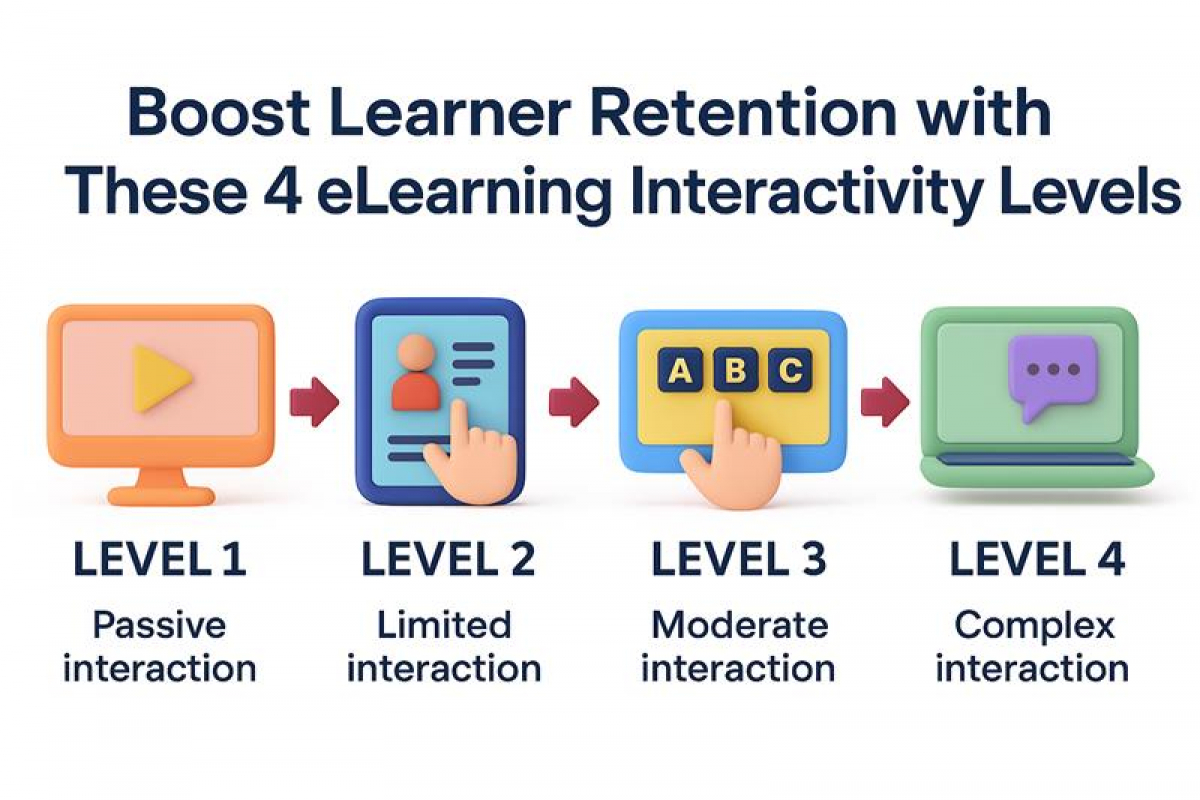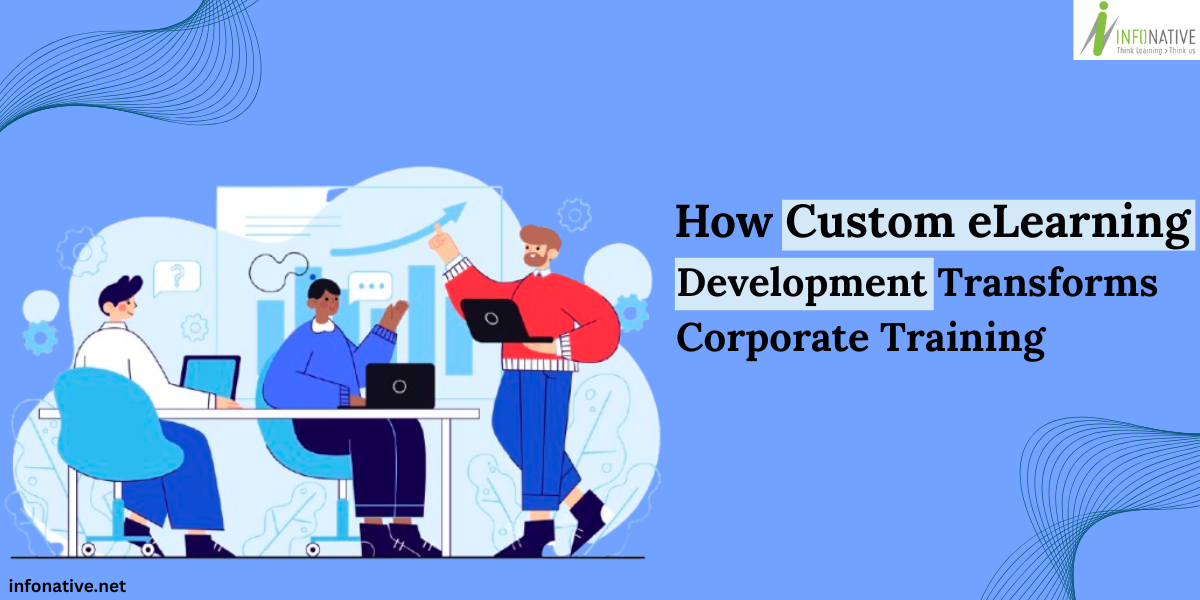Modern learners don’t want to be lectured—they want to be immersed, engaged, and empowered. In the world of digital training, where attention spans are short and expectations are high, incorporating the right level of interactivity in your eLearning design is the game-changer you’ve been looking for.
Let’s unpack the four essential levels of eLearning interactivity that can supercharge retention and turn passive viewers into active participants.
What Is eLearning Interactivity?
eLearning interactivity refers to the degree to which learners can actively engage with content in a digital learning environment. Instead of just reading or watching passively, interactive eLearning encourages users to click, explore, decide, respond, and apply what they’re learning.
In simpler terms, it’s the two-way communication between the learner and the content. The more interactive a module is, the more mentally engaged the learner becomes—leading to better retention, understanding, and performance.
Why Interactivity Matters in eLearning
• Boosts engagement by keeping learners alert and curious
• Enhances retention through active learning and better recall
• Encourages critical thinking by promoting application over memorization
• Provides instant feedback, enabling real-time improvement
• Simulates real-life scenarios—crucial for soft skills, safety, and decision-making
Examples of eLearning Interactivity
Tab-clicking to reveal layered content
• Drag-and-drop exercises
• Scenario-based questions with branching consequences
• Quizzes offering immediate feedback
• Immersive virtual reality (VR) simulations
• Interactive videos with multiple paths
Level 1: Passive Interactivity – A Gentle Start
Level 1 is the most basic and foundational form of interactivity. While it doesn’t demand much from the learner, it establishes structure and flow.
Key Features:
• Linear navigation (next/back buttons, simple scroll)
• Text-based content often accompanied by static images
• Audio narration of text blocks
• Occasional hyperlinks or PDFs for reference
Benefits:
• Easiest to develop and scale across topics
• Ideal for quick onboarding and compliance materials
• Provides learners with clear, digestible information
Retention Strategy:
• Use bold headers and bullet points to highlight key takeaways
• Keep slides concise to avoid cognitive overload
• Leverage brand-aligned visuals for familiarity and trust
Perfect For:
• HR policy rollouts
• Introductory product overviews
• Regulatory and mandatory training
Level 2: Limited Interactivity – Active Engagement Begins
Here, learners begin to actively interact with the content. It feels more personalized and less like a one-way information dump.
Key Features:
• Clickable hotspots, menus, and tabs
• Pop-up interactions with micro-content
• Embedded media like video snippets or narration
• Basic quizzes and drag-to-reveal elements
Benefits:
• Increases attention span through visual and tactile engagement
• Promotes better comprehension by reinforcing small learning units
• Supports self-paced exploration of layered information
Retention Strategy:
• Include short quizzes after key sections to reinforce learning
• Use storytelling in video or audio form to deepen emotional engagement
• Allow branching navigation so learners feel in control
Perfect For:
• Customer service skills
• Product walkthroughs with layered features
• Soft skills and communication modules
Level 3: Complex Interactivity – Learning Through Experience
This is where the real magic happens. Learners aren’t just observing—they’re practicing, exploring, and adapting.
Key Features:
• Scenario-based learning with branching logic
• Simulations mimicking real-world tools or situations
• Drag-and-drop exercises with immediate feedback
• Adaptive quizzes that shift based on performance
Benefits:
• Sharpens decision-making and critical thinking
• Enhances problem-solving through experiential learning
• Boosts long-term memory by involving emotional and cognitive functions
Retention Strategy:
• Simulate actual job environments (e.g., point-of-sale systems, dashboards)
• Include reflective feedback to reinforce both successes and missteps
• Present realistic challenges that require learners to choose and evaluate consequences
Perfect For:
• Sales negotiation training
• Software onboarding
• Safety compliance requiring situational judgment
Level 4: Real-Time and Immersive Interactivity – Total Engagement
This level is designed to captivate. It uses advanced technologies to create immersive, fully responsive learning ecosystems.
Key Features:
• Virtual Reality (VR) or Augmented Reality (AR) simulations
• AI-based content personalization and real-time decision feedback
• Gamified elements like points, leaderboards, and missions
• Interactive 360° environments or video branching stories
Benefits:
• Transforms passive knowledge into active performance
• Provides safe spaces to fail and try again without real-world consequences
• Promotes emotional investment, which anchors learning deeper
Retention Strategy:
• Use progressive difficulty to challenge learners gradually
• Offer immediate, detailed feedback based on user decisions or behaviors
• Design goal-based scenarios to build a sense of purpose
Perfect For:
• Advanced medical or emergency response training
• Engineering and fieldwork simulations
• Executive leadership and communication skill-building
Conclusion
Learners come with diverse needs, but all seek experiences that resonate and empower them. The four tiers of eLearning interactivity offer a dynamic toolkit for crafting learning journeys that go beyond information delivery to spark real transformation. When interactivity aligns seamlessly with your content, it not only reinforces retention—it creates an engaging environment that learners find intuitive, purposeful, and fulfilling.




